The oldest case of manufacturing and supplying of goods or services directly pertains to the very history of the economy (derived from Greek οίκος – ‘household’ and νęμoμαι – ‘manage’). Accordingly, the economy is a major parameter of a complex, developing society – so much so that it can be perceived as a crucial scope that has led to innumerable invasions, wars, raids, trading, and even exploration all throughout the course of human history.
Suffice it to say, the acquisition of goods and luxury items has always played a paramount role in the social affairs of humanity. Taking these fascinating factors into consideration, let us take a gander at six of the most expensive products from history you should know about.
Contents
Copper (first human use dating back to 7500 BC)
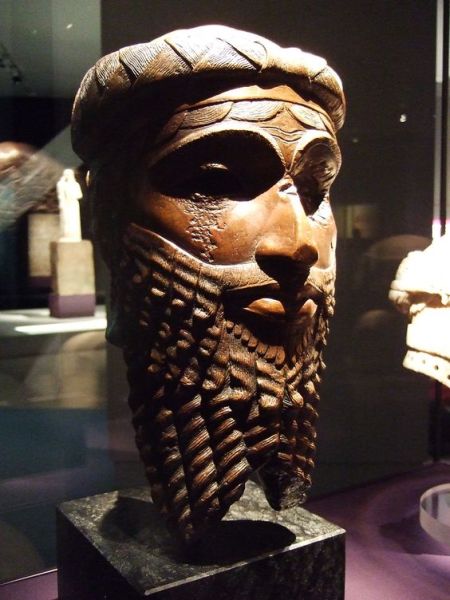
Copper is one of the few metals that can be used (to some degree) in its natural form, as opposed to extraction from an ore. This simplified model of usage probably encouraged the first human use of metal.
Over the next millennia, copper became the first metal to be smelted from its ore (circa 5000 BC), the first metal that was cast in a mold (circa 4000 BC), and the first metal that was alloyed with yet another metal (tin) to create bronze (circa 3500 BC). The very name copper is derived from cuprum, a simplified Latin term for aes Cyprium, in which aes referred to copper alloys and Cyprium denoted – Cyprus, where copper was mined since 4000 BC.
In fact, copper among all metals is intrinsically related to the development of the nascent stages of human urbanization – as marked by the advent of the Bronze Age. Bronze in itself constitutes over 85 percent of copper (generally), and as such mirrored the rise of the extensive human use of metals (for making tools, artifacts, and weapons) and the evolution of trade networks that connected factions over long distances.
In essence, the highly prized copper led to the increase of organized sectors of many a civilization, paving the way for larger cities, bigger industries, better technological pursuits, and massive commercial endeavors.
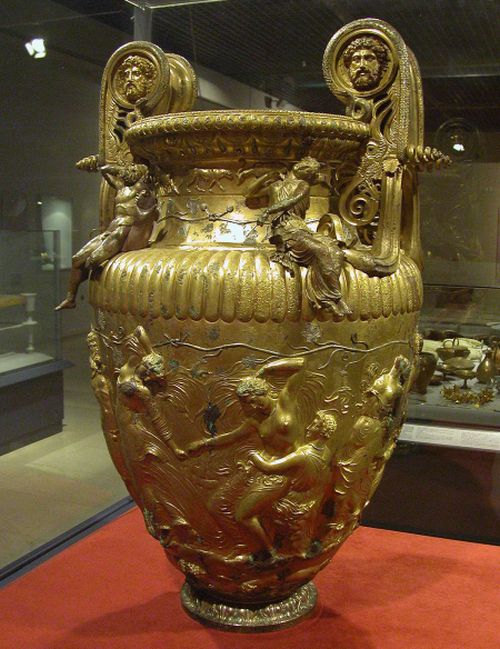
And even beyond its affiliation to human advancement, copper in itself was often culturally associated with money and currency. For example, in the very early phase of the Roman Republic (6th – 3rd century BC), copper lumps were used as money due to the very expensive nature of the metal.
To that end, the association of copper with wealth was so pronounced that even the visual look of the metal was enough to be identified with currency. This led to the rise of less-costly alloys like brass (made of copper and zinc) to be used for coins during Julius Caesar’s rule, while Augustus encouraged the usage of Cu-Pb-Sn alloy for coins.
The mining of copper also reached its peak (in the pre-industrial era) under the auspices of the Roman Empire, with an estimated annual output of around 15,000 tonnes. Furthermore, the Romans devised advanced copper mining techniques that included ventilated galleries and connective tunnels, as could be evidenced by the rich ancient copper mines of Munigua, southern Spain.
Salt (possibly dating back to circa 6000 BC)
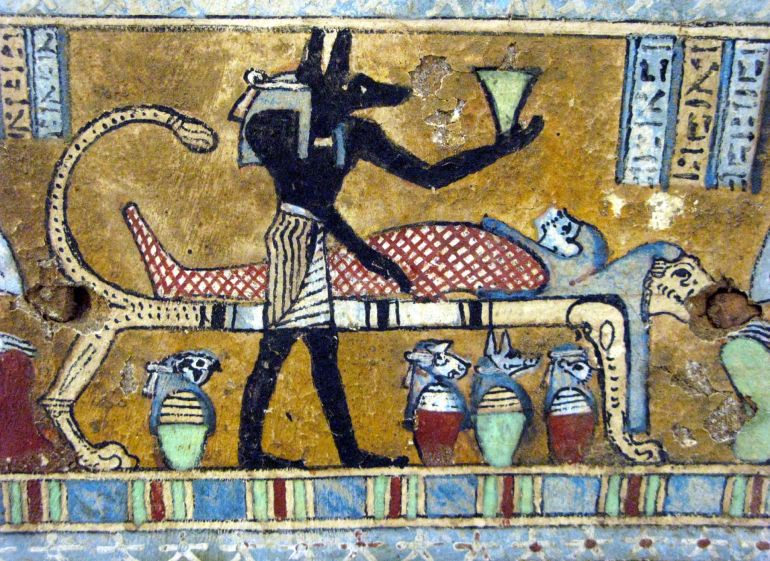
While copper played its part in the ‘high culture’ of humanity, salt as a material was inherent to the progression of human civilization as a whole. A substance so ubiquitous (yet labor-intensive to produce) in almost every ancient culture around the world, ranging from the Chinese, Indians, and Egyptians to Jewish people, Greeks, and Romans; salt was perceived to be very of high value due to two important reasons.
The first reason relates to its dietary nature which is crucial to the survival of the human race. The second reason (an often overlooked one) pertains to the preservative quality of salt that allowed the ancients to secure and store their food over extended periods. In essence, this also made transportation and trading of food items (like fish and meat) viable over relatively long distances.
Archaeological pieces of evidence attest to the importance of the highly expensive salt. For example, the 6,500-year-old city of Solnitsata, one of the earliest known walled settlements of Europe, was primarily built as a salt production facility – and its inhabitants used boiling processes to ‘bake’ and package the salt in ready-to-trade blocks.
Similarly, in ancient China and Egypt, salted fish began to appear by the 3rd millennium BC, and the product rather fueled more effective mummification methods in the case of the latter. Egyptians and Chinese also began to trade salted fish by the 2nd millennium BC, while the Phoenicians went ahead and traded salt itself for huge sums of profit across the Mediterranean, circa post-9th century BC.
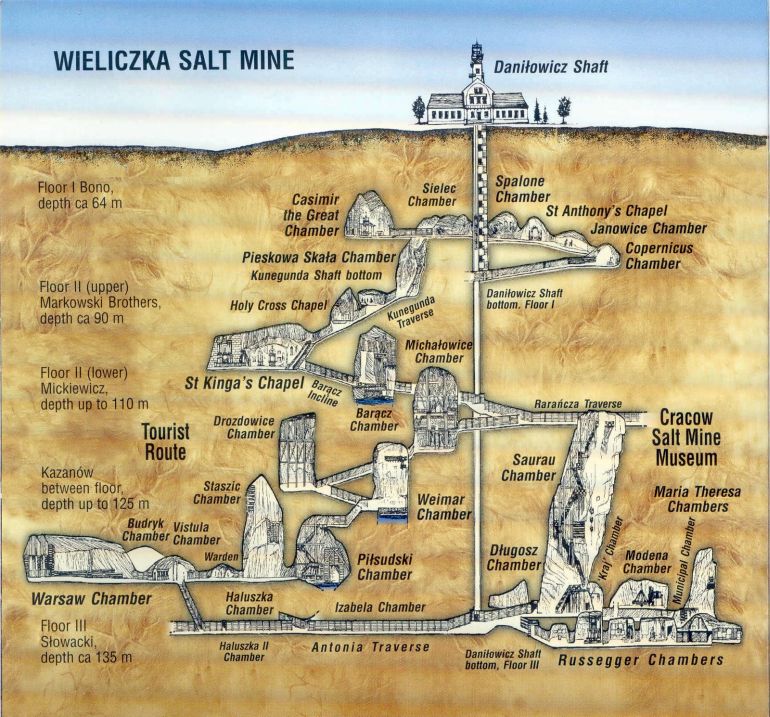
The Romans took particular interest in the supply of salt – so much so that many of their early road systems, including the famed Via Salaria, were developed for the efficient transportation of salt. Salt was even used for political machinations, with Roman leaders sometimes desperately reducing the price of this product to appease the masses.
The prices were later fixed by a dedicated official known as a Saltinator, in accordance with high taxes levied on the precious product. Interestingly enough, the word ‘salary’ also comes from salt, derived from the Latin salarium – which originally meant salt money or the soldier’s allowance for the purchase of salt.
By the 1st century AD, it was recorded that around half of the Chinese Tang Dynasty’s revenue came from salts, while in the late 6th century AD, merchants operating in sub-Saharan Africa often traded salt for gold.
To that end, salt was also used as a mode of currency in some parts of the world, including Ethiopia, where salt slabs, called amoles were used as a monetary medium As a matter of fact, the Ethiopians continued the practice of using salt as a medium of exchange till the early half of 20th century.
Silk (first cultivated circa 4th millennium BC)
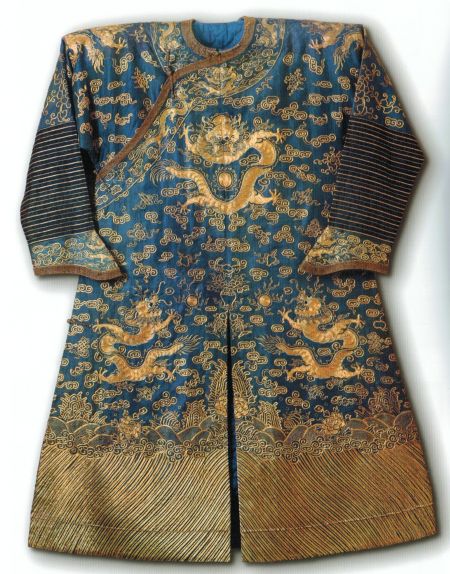
The production of silk started in Neolithic China, and the country (or at least its ancient factional counterpart) maintained its monopoly over silk manufacturing for more than 4,000 years. Suffice it to say, this limited supply of the product made it one of the most sought-after items in the ancient world, with an entire trade route maintained across the vast landmass of Eurasia being named after silk (the lucrative Silk Road started circa 207 BC).
Now originally, silk was perceived as a luxury item, by virtue of its shimmering appearance and prism-like refractive quality – and thus it was only reserved for the Chinese imperial family and the highest-ranking aristocrats of the kingdom. However, over the course of a millennium, silk was gradually adopted as a highly expensive item that was valued in its own right.
For example, during the Han Dynasty period (206 BC–220 AD), silk was offered as compensation to deserving government officials and civilians. In fact, much like the weight of gold, the length of silk cloth became the monetary standard in Han China. Interestingly enough, silk was also used by Chinese monarchs as opulent tributes to assuage the roving Xiongnu tribes from the north. Additionally, silk workers made paper from silk that was sold as ‘luxury paper’ for the rich.
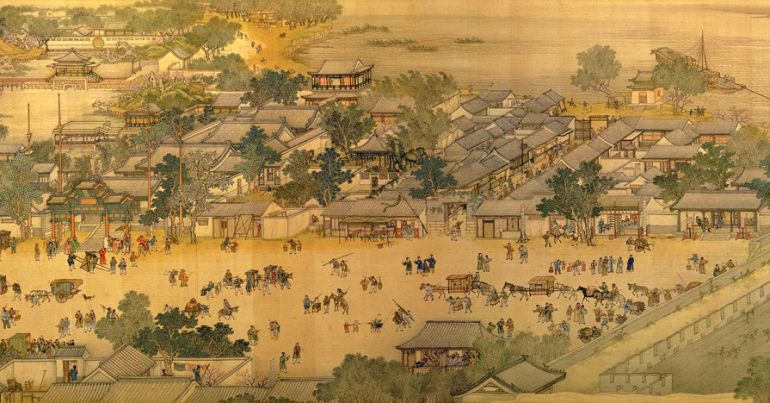
Now even more intriguingly, almost a thousand years before the inauguration of the Silk Road, silk was traded as a ritzy product all the way from China into the Mediterranean and Egypt. The latter’s case is evidenced by the discovery of silk inside a tomb of a mummy dating from 1070 BC, in the Valley of Kings.
To that end, merchants who dabbled in silk in the Hellenistic world regularly exchanged it for high-value items like gold, ivory, and even horses. As for the later Romans, the craze for silk reached economically destructive levels – so much so that the Roman Senate tried in vain to prohibit the wearing of silk (the cost of the expensive Chinese bark silk reached 300 denarii – the yearly compensation of a Roman legionary). Seneca the Younger took a rather moralistic standpoint against silk garments –
I can see clothes of silk, if materials that do not hide the body, nor even one’s decency, can be called clothes…wretched flocks of maids labor so that the adulteress may be visible through her thin dress so that her husband has no more acquaintance than any outsider or foreigner with his wife’s body.
During these epochs, the Chinese still maintained their monopoly over silk production, and it was only in the early 4th century AD that the Japanese learned the techniques of silk manufacturing (apparently with the aid of a Japanese expedition that captured four young Chinese women). The Indians also probably deciphered the secret silk-cultivating techniques by the 5th century AD.
And according to a tale of Procopius, the Eastern Romans (Byzantine Empire) obtained the first silkworm eggs in 522 AD, after two Nestorian monks smuggled the highly valued stuff from Central Asia by hiding them in rods of bamboo. Now historically, a relatively large silk industry did prosper in the Eastern Roman Empire, helped by techniques learned from their Sassanid (Persian) adversaries of the East, who in turn were possibly inspired by the Indians and smaller factions of Central Asia.
Cedar (known by circa mid-3rd millennium BC)
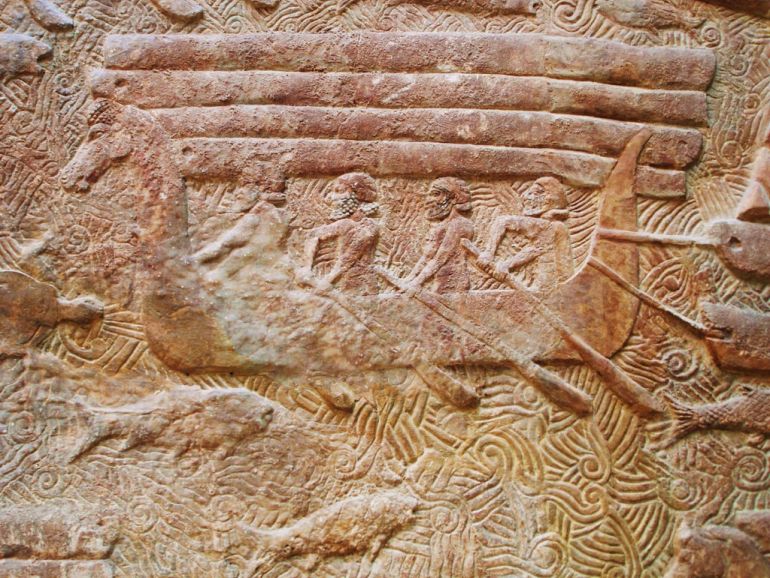
Unlike many of the items mentioned earlier in the article, Cedar had a spiritual significance in various ancient cultures that rather bolstered its actual value. For example, in Sumerian mythology, cedar was perceived as being akin to the Tree of Life symbolizing power, secret knowledge, and immortality.
In accordance with Mesopotamian cosmic geography, the cedar was associated with Ea (or Enki), the god of creation, crafts, intelligence, and even magic. This tendency of correlating cedar to divine attributes also extended to other civilizations, as could be evidenced by the intricate wooden details and other exquisite objects found in Egyptian pharaoh Tutankhamun’s sarcophagus (dating from the 14th century BC). The ancient Egyptians also used cedar resin in their painstaking mummification methods.
Now beyond the religious scope, cedar did have its fair share of practical advantages. In the Levant, the Lebanese cedar was admired for its high quality, tenderly aromatic scent, and resistance to both rot and insects – and as such the very expensive yet sturdy timber was used for both shipbuilding and construction.
In that regard, the Phoenicians used wood for some of their elite merchant ships that traveled around the Mediterranean. Biblical sources also mention how Solomon’s palace and Hall of Justice have structural supports, roofing, and paneling made of the finest Lebanese cedar. He was additionally aided by King Hiram of Tyre in sourcing cedar timber for the famed Temple of Solomon, in return for which Hiram was supposedly awarded 20 cities in the land of Galilee (1 Kings 9:11).
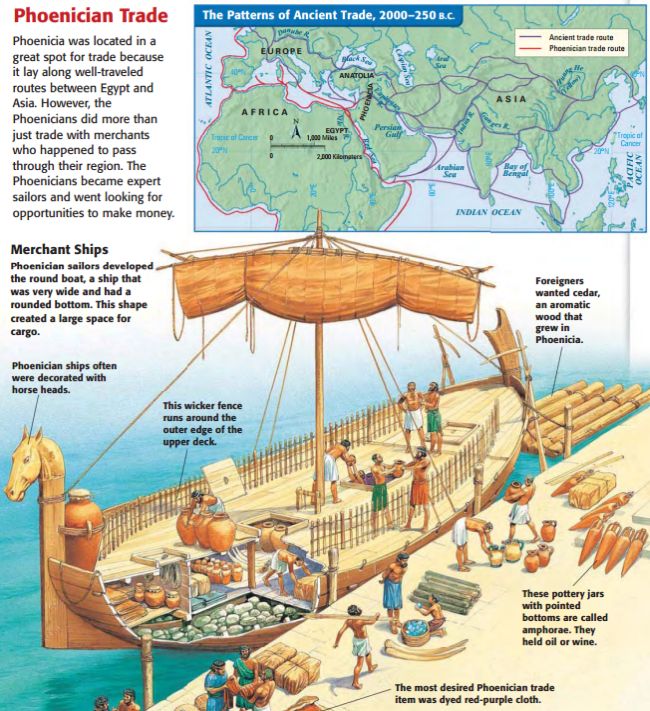
Even in ancient European cultures, the expensive cedar was symbolically associated with the power of life. To that end, the Celtic druids touted the cup of cedar resin as the Cup of Life. The Romans, on the other hand, sought to actively preserve cedar groves, with most of these areas being demarcated and protected in the name of the Senate.
Moreover, the Greeks and Romans also used cedar for their structural constructions, as could be deduced from architectural specimens like the temple of Artemis at Ephesus (as mentioned by Vitruvius) and the Odeon of Herodes Atticus in Athens (hypothetically discerned from the width of the superstructure).
Saffron (possibly traded by circa 2nd millennium BC)
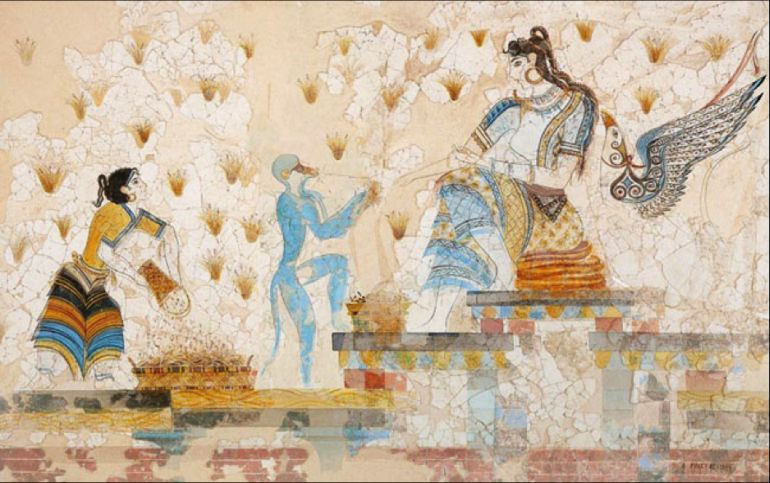
According to 2014’s third edition of Alan Davidson’s Oxford Companion to Food, around 70,000 flowers (derived from the Crocus sativus or Saffron crocus) are required for producing just one pound of saffron, which translates to an acre per 10 lbs of the spice.
Other sources talk about how one pound of saffron actually requires from around 100,000 to 250,000 plants, and consequently, the price equates to a whopping $95,000 per pound (in present value). But beyond just the modern scope, saffron throughout history has remained among the world’s most highly expensive substances.
Interestingly enough, the very word ‘saffron’ is (possibly) ultimately derived from Akkadian (the main language of ancient Mesopotamia) azupiranu, which rather attests to the product’s availability in the ancient Near East. However, the Sumerians probably didn’t cultivate saffron; instead, they imported it from the distant lands of Crete.
To that end, one of the Bronze Age frescoes from the renowned Knossos palace of Minoan Crete depicts a saffron harvest – and the scene curiously portrays a (presumably trained) monkey gathering the crocus harvest and a goddess overseeing the process (see the image above). Another fresco from the same palace site depicts a woman applying saffron to her bleeding foot – thus alluding to its usage as a herbal remedy.
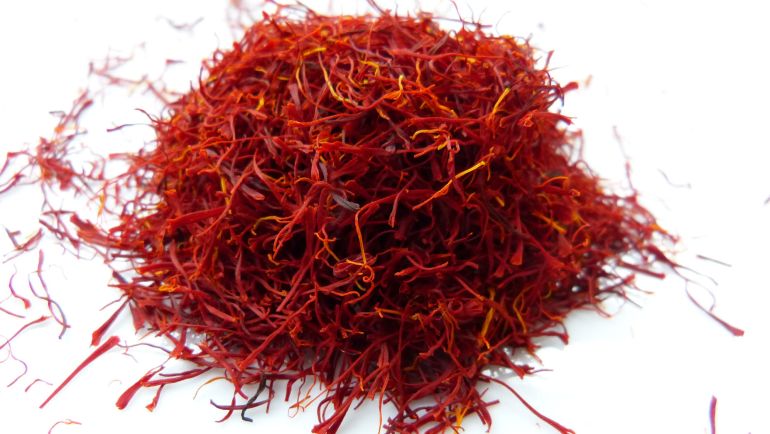
The ancient Greeks and Romans used saffron mostly as a perfume or deodorizer (and also as potpourri and offering to gods), and their stocks were sourced from the extensive Mediterranean trade network fueled by the Phoenicians. It was said that Cleopatra (of Greek Ptolemaic Egypt) used saffron in her warm baths before ‘encounters’ with men, in the belief that the substance would aid her skills of lovemaking and sensuality.
The Phoenicians themselves probably used saffron as a sort of substitute dye for the Tyrian Purple (mentioned later in the article). And finally, both the Persians and Indians used saffron as a ritual offering, spice, medicine, aphrodisiac, and even yellow dye for the famed Persian royal carpets.
Tyrian Purple (first used circa 1570 BC)
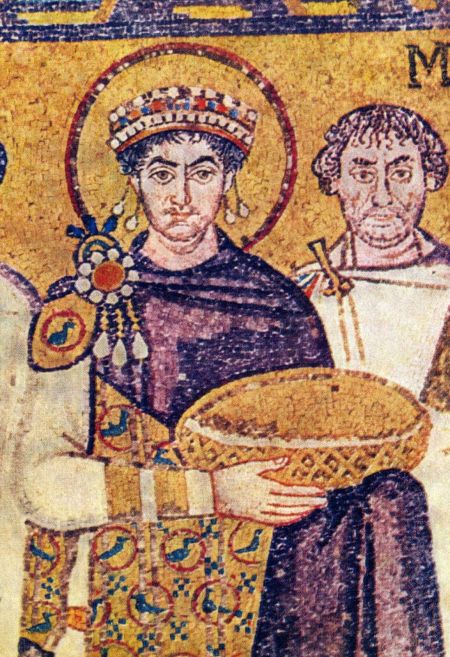
Tyrian purple (Greek – porphyra, Latin – purpura), also known as royal purple or imperial purple, was a type of reddish-purple dye extracted from the murex shellfish. In essence, the dye in itself was derived from the secretions of these organisms, and as such required a lot of labor for the delicate extraction method – a process that was probably streamlined by the workers at the Phoenician city of Tyre in the Bronze Age.
The labor cost complemented the striking reddish-rich hue of the dye, which was said to become brighter with weathering and sunlight – and all these factors made Tyrian Purple one of the most expensive commodities in history.
In fact, the renown of such ‘pure’ murex-obtained dyes was so widespread, especially among the ancient royalty, nobles, and rich merchants, that even other cheaper alternatives with the purplish hue were costly beyond the reach of common folk. This opulent nature value and status associated with these dyes inspired many Achaemenid Persian royals to hoard purple-tinted clothes that were given as gifts to higher-ranked officials.
Alexander the Great came across one such huge stash of purple-dyed clothes that were secretly enclosed inside the Royal Treasury at Susa (in the western part of Persia). According to Plutarch, the total weight of this particularly expensive hoard was around 5,000 talents (or roughly 288,500 lbs, if measured in Attic talents) – and the dye supposedly maintained its rich color even after 190 years of storage.
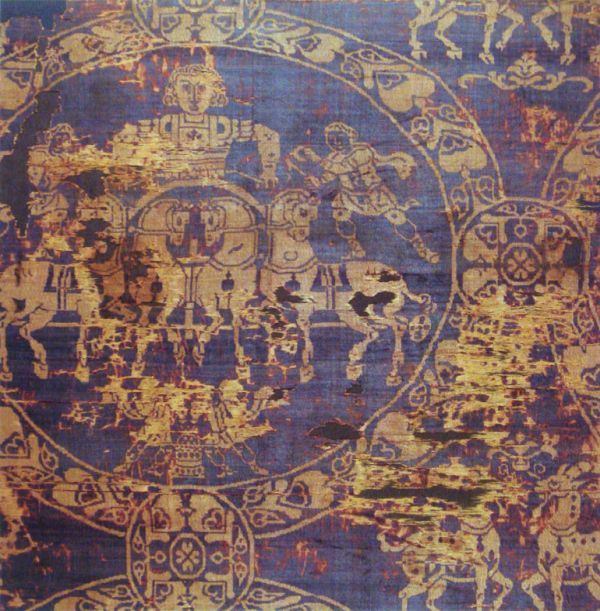
Now as is the case with most ancient historical items, the actual comparable value of the expensive Tyrian purple in current denominations can only be hypothesized. According to historian B. Caseau – “10,000 shellfish would produce 1 gram of dyestuff, and that would only dye the hem of a garment in a deep color”.
And while this statement may seem like an exaggeration, there are sources that talk about how discarded shells at Sidon (one of the most important Phoenician cities) formed artificial mountains that were 130 ft high.
Interestingly enough, in one of the Roman price edicts of 301 AD, one pound of purple dye is valued at 150,000 denarii or 3 lbs of gold, which comes at around a whopping $19,000 in present-day value. Additionally, a pound of pre-dyed wool was equal to the cost of one pound of gold.





Be the first to comment on "6 Of The Most Expensive Products From The Ancient World"